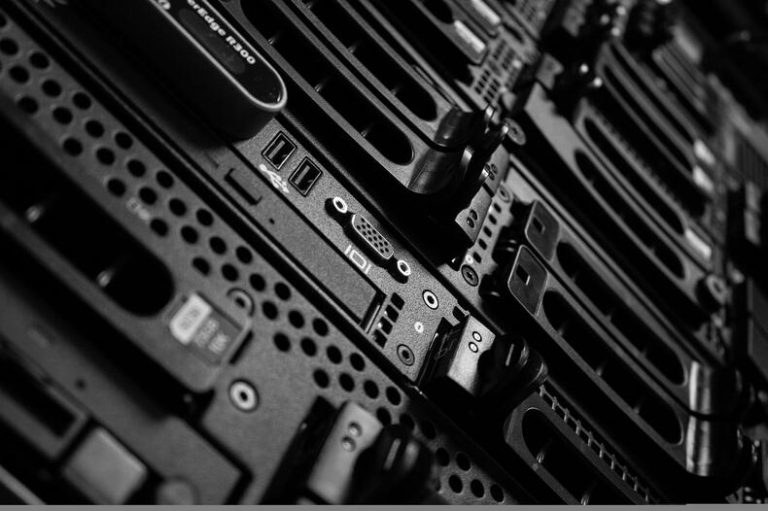Transforming Healthcare Diagnostics with Quantum AI
In recent years, there has been a growing interest in the potential of Quantum Artificial Intelligence (AI) to revolutionize various industries. One area in which this technology shows immense promise is healthcare diagnostics.

With its ability to process vast amounts of data and perform complex computations at an unprecedented speed, https://quantumaiplatform.com/ has the potential to transform the way we diagnose and treat diseases.
Understanding Quantum AI
Before diving into the impact of Quantum AI on healthcare diagnostics, it is important to have a basic understanding of quantum computing. Unlike traditional computing, which relies on bits to store and process information, quantum computing uses qubits. These qubits can exist in multiple states simultaneously, allowing for parallel processing and exponential computational power.
Quantum computing is a fascinating field that combines principles from physics, mathematics, and computer science. It is based on the principles of quantum mechanics, which describe the behavior of particles at the atomic and subatomic levels. In a traditional computer, information is stored in bits, which can represent either a 0 or a 1. However, in quantum computing, qubits can exist in a superposition of both 0 and 1 at the same time.
This ability to be in multiple states simultaneously is what gives quantum computers their immense computational power. While a classical computer would have to perform calculations one by one, a quantum computer can perform many calculations simultaneously, thanks to the superposition of qubits. This parallel processing capability opens up a whole new world of possibilities for solving complex problems.
The Basics of Quantum Computing
Quantum computing relies on principles such as superposition and entanglement to perform computations. Superposition allows qubits to exist in multiple states simultaneously, while entanglement enables the correlation between qubits, even when they are physically separated.
Superposition is a fundamental concept in quantum mechanics. It means that a qubit can be in a combination of multiple states at the same time. For example, a qubit can be both 0 and 1 simultaneously, with each state having a certain probability associated with it. This allows quantum computers to perform calculations on all possible combinations of states simultaneously, exponentially increasing their computational power.
Entanglement, on the other hand, is a phenomenon where two or more qubits become correlated in such a way that the state of one qubit is dependent on the state of the other, regardless of the physical distance between them. This correlation allows quantum computers to perform operations on multiple qubits simultaneously, leading to even greater computational power.
How AI is Integrated with Quantum Computing
Quantum AI combines the power of quantum computing with artificial intelligence algorithms. By leveraging the parallel processing capabilities of qubits, AI models can be trained and optimized more efficiently, leading to faster and more accurate results.
Artificial intelligence (AI) has revolutionized various industries, from healthcare to finance, by enabling machines to learn from data and make intelligent decisions. However, traditional AI algorithms can be computationally expensive and time-consuming, especially when dealing with large datasets.
Quantum AI aims to overcome these limitations by harnessing the power of quantum computing. By using qubits to perform parallel computations, quantum AI algorithms can process and analyze vast amounts of data more efficiently. This allows for faster training and optimization of AI models, leading to improved accuracy and performance.
Furthermore, quantum AI has the potential to solve complex problems that are beyond the reach of classical AI algorithms. For example, quantum AI could be used to optimize drug discovery processes, analyze genomic data for personalized medicine, or improve image recognition algorithms.
In conclusion, Quantum AI is an exciting field that combines the power of quantum computing with artificial intelligence. By leveraging the parallel processing capabilities of qubits, quantum AI has the potential to revolutionize various industries, including healthcare diagnostics. With further advancements in both quantum computing and AI, we can expect to see even more groundbreaking applications in the future.
The Current State of Healthcare Diagnostics
Currently, healthcare diagnostics heavily rely on traditional methods such as laboratory tests, medical imaging, and patient history. While these methods have served us well, they often have limitations in terms of accuracy, speed, and cost-effectiveness.
Traditional Methods in Healthcare Diagnostics
Laboratory tests, such as blood tests and genetic screenings, are commonly used for diagnosing various conditions. These tests analyze samples taken from patients to detect the presence of specific substances or genetic markers that may indicate the presence of a disease or condition. Blood tests, for example, can measure the levels of different chemicals, hormones, or antibodies in the blood, providing valuable insights into a person’s overall health and the presence of any abnormalities.
Medical imaging techniques, such as X-rays, CT scans, and MRIs, provide detailed information about the internal structures of the body. X-rays use electromagnetic radiation to create images of bones and tissues, allowing healthcare professionals to identify fractures, tumors, or other abnormalities. CT scans combine multiple X-ray images to create cross-sectional images of the body, providing a more detailed view of organs and tissues. MRIs use magnetic fields and radio waves to generate detailed images of soft tissues, such as the brain, muscles, and organs, helping in the diagnosis of conditions like tumors, strokes, or multiple sclerosis.
Additionally, patient history and symptoms play a crucial role in identifying and diagnosing diseases. Healthcare professionals rely on detailed conversations with patients to gather information about their medical history, family history, lifestyle, and symptoms. This information helps in narrowing down the possible causes of the symptoms and guides further diagnostic tests or treatments.
Limitations of Current Diagnostic Techniques
Despite their widespread use, traditional diagnostic methods have their limitations. Laboratory tests may take days or weeks to produce results, delaying the treatment process. This delay can be critical, especially in cases where early intervention is crucial for better outcomes. Additionally, some laboratory tests may have a margin of error, leading to false positives or false negatives, which can have significant implications for patient care.
Medical imaging techniques can be expensive and may not always provide a clear diagnosis. While they offer valuable insights into the internal structures of the body, the interpretation of these images requires expertise and can sometimes be subjective. Different healthcare professionals may interpret the same image differently, leading to variations in diagnosis and treatment plans.
Moreover, patient history and symptoms can sometimes be subjective and prone to error. Patients may forget or omit important details, leading to incomplete information for healthcare professionals. Additionally, symptoms can vary widely among individuals, making it challenging to pinpoint the exact cause of a particular set of symptoms. This subjectivity can lead to misdiagnosis or delayed diagnosis, potentially impacting patient outcomes.
As healthcare continues to evolve, there is a growing need for more accurate, efficient, and cost-effective diagnostic techniques. Researchers and innovators are exploring new technologies, such as artificial intelligence, machine learning, and genomic sequencing, to enhance the diagnostic process. These advancements hold the promise of revolutionizing healthcare diagnostics, enabling earlier and more accurate detection of diseases, and ultimately improving patient outcomes.
Quantum AI in Healthcare Diagnostics
With the potential to overcome the limitations of current diagnostic techniques, Quantum AI holds tremendous promise in healthcare diagnostics.
Potential Benefits of Quantum AI in Diagnostics
Quantum AI can analyze massive datasets with incredible speed, enabling faster and more accurate diagnosis. By combining patient history, medical imaging, and genetic data, Quantum AI algorithms can identify patterns and correlations that may go unnoticed by traditional methods.
Challenges in Implementing Quantum AI in Healthcare
While the potential benefits of Quantum AI in healthcare diagnostics are exciting, there are several challenges that need to be addressed. Firstly, quantum computing technologies are still in their infancy, and large-scale implementation is yet to be achieved. Additionally, the integration of Quantum AI into existing healthcare systems requires significant investment in infrastructure and personnel training.
Future Perspectives of Quantum AI in Healthcare
Looking ahead, the future of Quantum AI in healthcare diagnostics looks promising.
Predicted Developments in Quantum AI
As quantum computing technology continues to advance, we can expect more robust and reliable quantum AI systems specifically tailored for healthcare applications. The development of quantum error correction techniques and increased qubit stability will further enhance the capabilities of Quantum AI in diagnostics.
The Impact on Healthcare Professionals and Patients
The widespread adoption of Quantum AI in healthcare diagnostics will have a profound impact on both healthcare professionals and patients. Healthcare professionals will benefit from more accurate diagnoses and insights into personalized treatment options. Patients, on the other hand, will experience improved healthcare outcomes and reduced waiting times for diagnosis and treatment.
Ethical Considerations of Quantum AI in Healthcare
While the potential of Quantum AI is exciting, it also raises important ethical considerations that need to be addressed.
Data Privacy and Security Issues
With the increased use of personal health data in Quantum AI systems, ensuring data privacy and security becomes paramount. Measures such as robust encryption, strict access controls, and transparent data usage policies need to be implemented to safeguard patient information.
Ethical Implications of AI Decision Making in Healthcare
AI algorithms, including those used in Quantum AI, make decisions based on patterns and correlations in data. It is essential to carefully examine the ethical implications of relying solely on AI for medical decisions and ensure human oversight in critical healthcare decisions.
In conclusion, the integration of Quantum AI in healthcare diagnostics has the potential to transform the way we diagnose and treat diseases. While there are challenges to overcome, the future looks promising. With careful consideration of ethical implications and the development of robust infrastructure, Quantum AI can revolutionize the field of healthcare diagnostics, leading to improved healthcare outcomes for patients worldwide.







